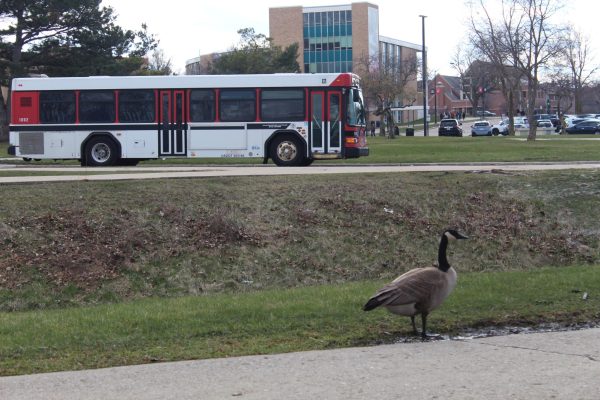Study: DeKalb yields low percentage of students living on campus
April 1, 2013
A housing study has shown DeKalb has an oversupply of rented properties, Mayor Kris Povlsen said.
Rented properties make up 56 percent of DeKalb dwellings, and an undersupply of owner-inhabited properties makes up 44 percent of DeKalb dwellings.
The NIU Center for Governmental Studies worked with the city of DeKalb last year on a housing study designed to determine the housing and resource needs of the city.
The results were compared to five other university communities: Champaign-Urbana (University of Illinois), Macomb (Western Illinois University), Charleston (Eastern Illinois University), Carbondale (Southern Illinois University), and Bloomington-Normal (Illinois State University).
Diana Robinson, director for the Center for Governmental Studies, said it is important for the university to be involved in city affairs.
“This is really an important collaboration with the city and NIU,” she said. “When the city and the university come together on important issues like this, it speaks to the fact that both know how important this is to the overall health of the community. Both want to see DeKalb flourish.”
Robinson said DeKalb has one of the lowest percentages of students living on campus with 23 percent. DeKalb has the second-lowest percentage of rented units with 56 percent.
Robinson said 23 DeKalb neighborhoods were studied. City Manager Mark Biernacki said the information gathered in the study will be beneficial.
“The study was effective at acquiring data that thereafter will be used by policy makers to make decisions on housing-type projects,” Biernacki said. “The work resulted in a significant amount of information the policy makers can now use.”
Povlsen said the study’s results will help officials make informed decisions that will help in the future.
“We were hoping this information would help us understand a little bit about our housing stock so we can do better in the future,” he said. “It shows us what we need in terms of the future.”
Povlsen said the study also looked at the quality of life in the neighborhoods, including things like exterior housing conditions and crime statistics. However, he said these results may not be completely accurate and may not account for all aspects of a neighborhood. For example, Povlsen said downtown DeKalb shows higher crime rates, but the study does not take into account the amount of people who visit downtown.
Robinson said the study looked at the overall condition of the neighborhoods, the number of units and how well the housing availability is aligned with the income of the DeKalb residents. Robinson said there is room for error, as the study is making an assumption that residents spend 30 percent of their income on housing; in reality, some may spend more or less than that.
“The purpose was to provide the city of DeKalb with current, relevant information to help make sound housing decisions,” Robinson said. “As public funds become increasingly scarce, there’s a lot at stake, including quality of life as well as good city services to improve life for residents. We need to be good stewards of the public valor.”












